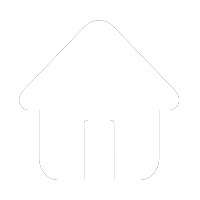Blog
Easy Prefab Houses Modular Granny Flats for Smart Living

Table of Contents
-
Introduction: When Architecture Meets Ecology
-
What Are Green Roof Container Homes?
-
The Rise of Rooftop Vegetation in Modular Housing
-
Technical Benefits: Insulation, Stormwater & Air Quality
-
Aesthetic and Lifestyle Advantages
-
Structural Considerations for Green Roof Containers
-
Global Market Trends & Demand Drivers
-
Notable Examples and Case Studies
-
Versatile Use Cases: From Homes to Classrooms
-
Environmental Impact and Biodiversity Benefits
-
Urban Agriculture and Food Security Potential
-
Economic Considerations & ROI
-
Challenges and Maintenance Requirements
-
Future Outlook: From Niche to Mainstream
-
Conclusion: Building Greener Futures
✅ Main Article (Word Count ≈ 2,210)
1. Introduction: When Architecture Meets Ecology
In the evolving landscape of sustainable architecture, green roof container homes stand out as a compelling fusion of industrial design and ecological innovation. By marrying the strength and versatility of shipping containers with the environmental benefits of living rooftops, these homes present a practical, aesthetically pleasing, and ecologically conscious housing solution.
2. What Are Green Roof Container Homes?
At their core, green roof container homes are shipping container structures topped with vegetation—ranging from simple grass layers to elaborate rooftop gardens with shrubs, flowers, or even small trees. These roofs serve both functional and environmental purposes, enhancing the home’s thermal performance while contributing to urban biodiversity.
3. The Rise of Rooftop Vegetation in Modular Housing
While rooftop vegetation is not new, its integration with modular container housing is a relatively fresh trend. The concept is being championed by design-forward companies like Green Roof Shelters in the UK, which offers container-based classrooms, open-air pavilions, and even bird-watching huts—each crowned with a living roof.
This trend coincides with broader global movements toward biophilic design and net-zero construction, appealing to eco-conscious homeowners, developers, and municipal planners.
4. Technical Benefits: Insulation, Stormwater & Air Quality
Green roofs on container homes deliver tangible performance benefits:
-
Thermal insulation: Vegetation layers reduce heat gain in summer and heat loss in winter, cutting HVAC costs.
-
Stormwater management: Soil and plants absorb rainwater, reducing runoff and easing urban drainage systems.
-
Air purification: Plants filter airborne pollutants and produce oxygen, improving local air quality.
-
Noise reduction: Vegetation layers help dampen external noise—a valuable feature in urban settings.
5. Aesthetic and Lifestyle Advantages
Visually, green roofs transform the often industrial appearance of shipping containers into something more organic and inviting. For homeowners, these rooftops can become:
-
Private gardens
-
Relaxation decks with integrated seating
-
Urban farming plots for vegetables and herbs
The contrast between steel walls and lush greenery creates a bold architectural statement while fostering a personal connection to nature.
6. Structural Considerations for Green Roof Containers
A successful green roof requires careful engineering:
-
Load-bearing reinforcement to handle soil and plant weight
-
Waterproof membranes to prevent leaks into living spaces
-
Drainage layers to manage excess rainwater
-
Root barriers to protect structural integrity
These elements are essential when retrofitting existing containers or designing new builds from scratch.
7. Global Market Trends & Demand Drivers
Several forces are driving the rise of green roof container homes:
-
Urbanization: Cities seeking more green spaces without sacrificing housing density
-
Climate change: Need for heat island mitigation and stormwater solutions
-
Housing affordability: Container homes remain cost-effective compared to traditional construction
-
Eco-regulations: Cities like Toronto and Paris now mandate green roofs for certain new builds
8. Notable Examples and Case Studies
-
Green Roof Shelters (UK): Modular classrooms and open-air spaces with full vegetation cover.
-
ZNSS House (China): Prefabricated residential units integrating green roofs for thermal and visual benefits.
-
Farmonaut® (Global): Urban agriculture-focused designs for rooftop farming in container structures.
These examples showcase the adaptability of the concept across climates and cultures.
9. Versatile Use Cases: From Homes to Classrooms
Green roof container structures can serve diverse purposes:
-
Residential housing—single-family or multi-unit complexes
-
Educational facilities—eco-classrooms teaching sustainability
-
Hospitality—vacation cabins with immersive nature experiences
-
Urban agriculture hubs—community gardens atop mobile units
10. Environmental Impact and Biodiversity Benefits
By integrating living roofs, container homes contribute to:
-
Increased pollinator habitats in urban areas
-
Reduced carbon emissions via plant CO₂ absorption
-
Microclimate regulation within neighborhoods
-
Enhanced urban wildlife corridors
11. Urban Agriculture and Food Security Potential
In dense cities, rooftop farming in container homes can help address food security challenges. Edible green roofs allow residents to grow fresh produce on-site, reducing food miles and promoting healthier diets.
12. Economic Considerations & ROI
While installing a green roof adds upfront costs—typically $25–$40 per square foot—it offers long-term savings:
-
Lower energy bills from improved insulation
-
Extended roof lifespan due to UV protection
-
Increased property value through unique eco-features
-
Potential tax incentives in green building jurisdictions
13. Challenges and Maintenance Requirements
Despite their benefits, green roofs require:
-
Regular irrigation and weeding
-
Seasonal plant replacement in harsh climates
-
Structural inspections to ensure waterproofing integrity
These factors must be considered in lifecycle planning.
14. Future Outlook: From Niche to Mainstream
The green roof container home movement is poised for rapid growth as cities and developers prioritize climate resilience. Technological advances in lightweight soil systems, drought-resistant plants, and modular irrigation will make adoption easier and more cost-effective.
15. Conclusion: Building Greener Futures
Green roof container homes embody the triple bottom line of sustainability—environmental, economic, and social benefits. By merging rugged container architecture with living ecosystems, they offer a vision of cities where housing and nature thrive together.
This isn’t just a passing architectural trend—it’s a blueprint for resilient, regenerative urban living.
Pls check www.easyprefabhouse.com and send inquiry to dzswb@hzxiaoya.com

















